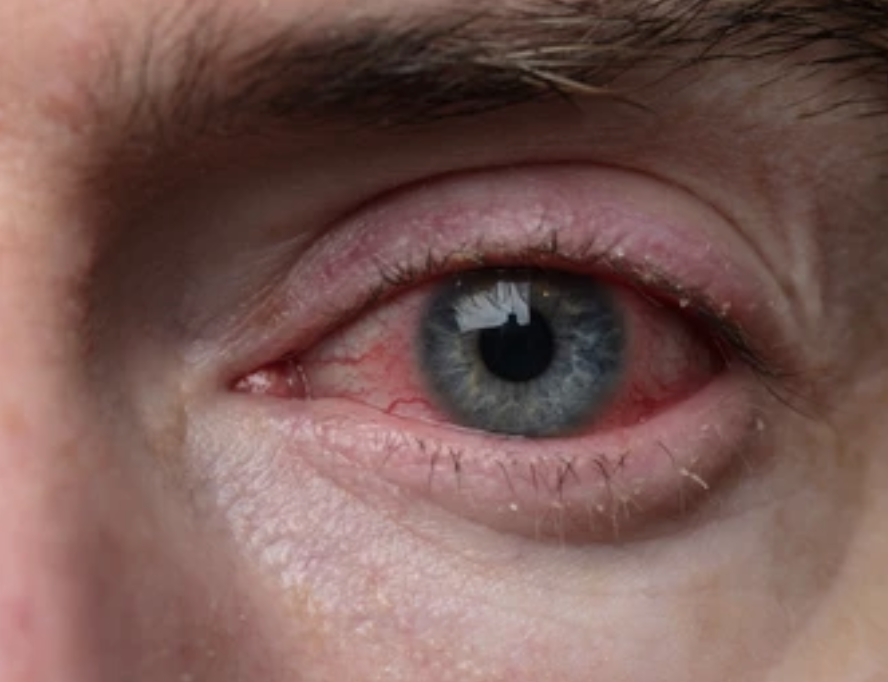Blepharitis Explained: Causes, Symptoms & Best Treatment Options
Eyelid blepharitis is a common yet easily neglected disease. You may have experienced the uncomfortable side symptoms of blepharitis if you have ever had painful, puffy, or irritated eyes. Effective management of this disorder requires an understanding of its causes, an ability to identify its symptoms, and knowledge of the best available treatments. We will examine blepharitis in detail in this blog, including its causes, symptoms, and best practices for relief.
What is blepharitis?
The infection of the eyelid borders where the eyelashes grow is known as blepharitis. Since it is typically a lifelong disorder, it can remain or return over time. One or both eyes may be affected by this disorder, which affects both the upper and lower eyelids. If left untreated, blepharitis can cause eye infections and eyelid marks along with discomfort and irritation.
Causes of Blepharitis
While there are many other causes of blepharitis, the following are the most typical ones:
Bacterial Infection: Blepharitis often occurs by bacterial infections, especially those caused by Staphylococcus germs. Pain and discomfort may result from these bacteria infecting the glands close to the eyelashes.
Seborrheic Dermatitis: This skin disorder can also affect the eyelids and has been linked to dandruff. It results in skin scaling, which irritates the area around the eyes.
Meibomian Gland Dysfunction: The oil produced by the Meibomian glands, which are situated along the edges of the eyelids, keeps the eyes lubricated. These glands can contribute to blepharitis by causing irritation and dry eyes when they are blocked or dysfunctional.
Allergy Reactions: Allergies to dust, pollen, or cosmetics can irritate the area around the eyelids, which may lead to blepharitis. For some people, seasonal allergies are a common cause.
Rosacea: Blepharitis can occur in people who have rosacea, an irritating skin disorder that causes redness on the face. The eyelids may become red due to an infection caused by rosacea.
Hormonal Changes: Blepharitis may also be caused by hormonal changes, such as those that take place during pregnancy or age. Hormones may affect skin health and oil production, increasing the risk of the disorder.
Symptoms of Blepharitis
Early treatments for blepharitis depend on identifying its symptoms. Typical signs and symptoms include:
Dry or Burning Eyes: A chronic pain or burning feeling in the eyes is a common symptom of blepharitis.
Red, Swollen Eyelids: One of the main signs of blepharitis is infection of the eyelid margins. The eyelids could look swollen and infected.
Crusty or Oily Discharge: Particularly in the morning, you could observe a crust developing around your eyelashes. This discharge may appear greasy or yellowish.
Dry Eyes or Gritty Feeling: People with blepharitis may experience dry eyes, a rough feeling, or a sensation that something is inside their eyes.
Skin Flaking Around the Eyes: The skin surrounding the eyelids can split and crack due to seborrheic dermatitis.
Best Treatment Options for Blepharitis
While the fact that blepharitis can be a difficult condition to manage, there are a number of effective blepharitis treatment techniques that can help reduce symptoms. The goals of treatment are to reduce irritation, improve eyelid sanitation, and deal with any deeper problems that may be creating this issue.
1. Eyelid hygiene and warm compresses
Improving eyelid hygiene is often the first step in treating blepharitis. Warm compresses can help remove blocked meibomian glands and release layers of dust on the eyelids. Using a warm compress is as follows:
For five to ten minutes, cover your closed eyes with a clean cloth soaked in warm water. To get rid of dust or layers, gently rub your eyes with your fingertips or a clean cotton cloth.
2. Antibiotic Eye Drops and Contact Lenses
Doctors may recommend antibiotic eye drops and contact lenses when a bacterial infection is present. These drugs can relieve symptoms and help in the removal of the bacteria that is causing the swelling.
3. Artificial Tears (Eye Drops That Lubricate)
Lubricating eye drops can help keep the eyes moist and reduce discomfort if blepharitis is producing dry eye symptoms. These free-of-charge drops reduce discomfort and increase the stability of the tear surface.
4. Seborrheic Dermatitis Medicated Shampoos or Creams
For people with blepharitis caused by seborrheic dermatitis, medicated shampoos with substances like selenium sulfide or ketoconazole may be beneficial. These products may minimize irritation and skin removal.
5. Omega-3 Fatty Acids
Adding omega-3 fatty acids to your diet may help improve the function of the meibomian glands. These healthy fats, found in foods like fish, flaxseed, and walnuts, can help reduce inflammation in the eyes and support tear production.
6. Avoiding Triggers
For individuals with blepharitis related to allergies or skin conditions like rosacea, avoiding triggers is key. Using hypoallergenic skincare products, keeping a clean environment, and managing rosacea through appropriate treatments can help minimize flare-ups.
7. Professional Treatment
In some cases, a visit to an eye care professional may be necessary for more advanced treatments. Procedures like meibomian gland expression or intense pulsed light therapy (IPL) may be recommended for patients with chronic or resistant blepharitis, especially if meibomian gland dysfunction is involved
Conclusion
While blepharitis can be a frustrating and uncomfortable condition, with the right treatment and self-care habits, its symptoms can be effectively managed. If you suspect you have blepharitis or are experiencing any of the symptoms mentioned, it's important to consult with an eye care professional. They can help determine the cause of your symptoms and guide you toward the most effective treatment plan for long-term relief.


